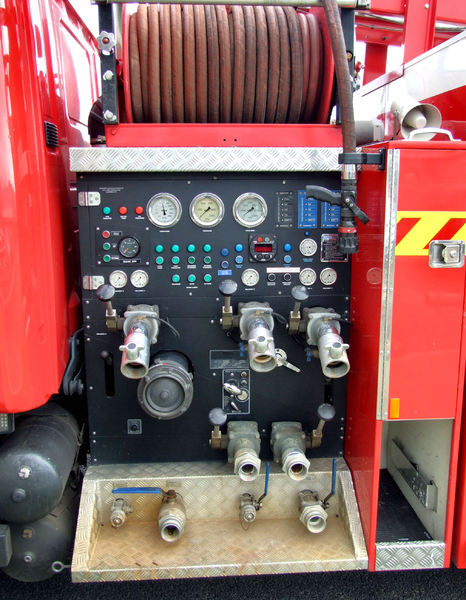Choosing the proper auto body repair shop can make a big distinction within the quality and longevity of your vehicle’s repairs. A reliable repair shop affords more than just aesthetic fixes; it ensures safety, functionality, and the preservation of your automobile’s value. Right here’s a step-by-step guide on how to decide on the correct auto body repair shop for your vehicle.
1. Research and Ask for Recommendations
Start by gathering a list of potential repair shops. You’ll be able to search on-line, however don’t underestimate the power of word-of-mouth recommendations. Ask friends, family, and colleagues if they’ve a trusted auto body shop they’ve worked with before. Hearing about others’ experiences will help establish shops that deliver quality work and good buyer service.
On-line reviews on platforms like Google, Yelp, or the Higher Business Bureau (BBB) are also invaluable. Look for patterns in opinions fairly than focusing on individual complaints. Consistently positive feedback, particularly regarding quality and timeliness, is an effective sign.
2. Check for Proper Certifications
A reputable auto body repair shop will usually be certified by relevant organizations. Certifications indicate that the shop’s technicians have undergone particular training to work on vehicles safely and effectively. Look for certifications from the National Institute for Automotive Service Excellence (ASE) or the Inter-Trade Conference on Auto Collision Repair (I-CAR). Many automakers also supply manufacturer-particular certifications, that means the shop has the knowledge and tools to work on specific makes and models.
These certifications show a shop’s commitment to high standards in each equipment and expertise. Be cautious of shops that lack certifications, as this may point out a lower level of experience or up to date equipment.
3. Evaluate the Facility and Its Equipment
Take a tour of the shop if possible. A clean, organized shop with modern equipment can inform you numerous about the enterprise’s professionalism and capabilities. Advanced tools and up to date machinery are essential for fixing modern vehicles, particularly these with electronic systems and specialised materials. Equipment like computerized paint-matching systems, frame straightening machines, and digital measuring units are signs of a well-geared up shop.
An organized workspace also means that the shop cares about quality and efficiency. Observing the facility’s layout and organization can give you perception into how they handle your vehicle, from assessment to repair.
4. Ask About Warranties
A trustworthy auto body repair shop should offer warranties for their repairs. Warranties not only protect you in case something goes fallacious but in addition point out that the shop stands behind its work. Many shops offer a warranty of one to three years on parts and labor, with some even providing lifetime warranties on certain services.
Be sure you get the warranty details in writing. Understand what it covers, corresponding to parts, labor, and paint, and any limitations or exclusions that will apply. Retailers that don’t offer any warranty needs to be approached with caution, as they may lack confidence in their own workmanship.
5. Get Multiple Estimates
Getting estimates from a number of shops may also help you establish a fair value range on your repairs. While it is perhaps tempting to choose the most cost effective option, do not forget that worth can reflect quality. An unusually low estimate may suggest the shop uses inferior parts or employs less skilled technicians. Balance the associated fee with the value you’re getting—shops that charge a little more typically provide better parts, more skilled staff, and more thorough service.
When comparing estimates, make sure you’re looking at all aspects, not just the underside line. Sometimes, additional services or warranties are included in the price, making a slightly higher estimate more advantageous within the long run.
6. Assess Customer Service
Good customer service is essential in any enterprise, and auto body repair shops are no exception. How a shop communicates with you may give you insight into the kind of experience you’ll have. Look for a shop that’s willing to reply your questions, explains the repair process intimately, and provides common updates on your vehicle’s progress.
Be wary of shops that are evasive or overly pushy. An upfront, friendly approach signifies a enterprise that values transparency and buyer satisfaction, whereas a lack of communication may lead to misunderstandings and frustrations.
7. Confirm Insurance and Licensing
Make sure the shop is properly insured and licensed. Insurance is essential for covering damages within the occasion of an accident or mishap while your vehicle is on the shop. A valid license shows that the shop meets local rules and standards. Most states require shops to have licenses to operate, so this is something you shouldn’t overlook.
You may additionally need to confirm if the shop works with your automobile insurance provider. Many repair shops have established relationships with insurers, which can simplify the claims process. Nonetheless, be cautious if the shop closely pressures you to go through insurance—they could be more targeted on profit than quality work.
8. Take Your Time
Selecting the best auto body repair shop will not be a call to rush. While quick repairs could also be interesting, it’s worth taking the extra time to research and vet totally different options. A rushed determination may end in poor-quality repairs which may not final, costing you more time and money down the road.
When it comes to something as valuable and essential as your vehicle, investing a little further time and effort into discovering the correct repair shop is well price it. By following these steps, you’ll be able to make an informed choice, ensuring that your vehicle is in capable palms and that the repair work will stand the test of time.
If you treasured this article and you simply would like to receive more info pertaining to range rover auto body generously visit our own web page.



















